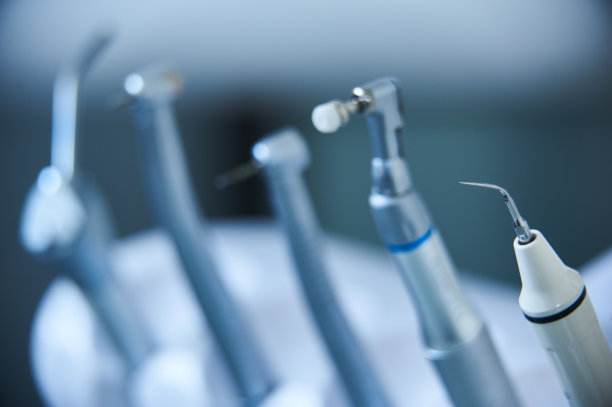The Essential Guide to Extracting a Tooth Safely and Comfortably for Optimal Oral Health
Summary: This article serves as a comprehensive guide to the essential practices of tooth extraction, emphasizing a safe and comfortable approach for achieving optimal oral health. The content covers crucial topics such as understanding the necessity for extraction, the preparation needed for the procedure, the extraction process itself, and the aftercare essentials. Through this guide, readers will gain a deeper understanding of each step involved in tooth extraction, including managing anxiety and pain, thereby ensuring a smoother experience. By prioritizing both safety and comfort, this article aims to empower individuals facing tooth extraction with the knowledge they need to make informed decisions about their oral health.
1. Understanding the Need for Tooth Extraction

Tooth extraction is often regarded as a last resort in dental care, typically considered when a tooth is severely decayed, infected, or causing overcrowding in the mouth. A thorough examination by a dental professional is essential to determine the necessity for extraction. Commonly, wisdom teeth are extracted due to the complications they can cause, such as impaction and pain.
In some cases, dental professionals may recommend extraction to prevent future complications. For instance, a tooth may be damaged beyond repair, and extracting it could help to preserve the health and integrity of surrounding teeth. It is crucial for patients to understand the implications of extraction, including the potential benefits and long-term effects on oral health.
Another aspect of understanding the need for extraction involves facing the emotional side of the procedure. Patients often experience anxiety about losing a tooth, so discussing these feelings with a dentist can help alleviate concerns, ensuring that the extraction process is approached with a calm mindset.
2. Preparing for a Tooth Extraction
Preparation for a tooth extraction involves several steps to ensure both safety and comfort. The first step is to schedule a consultation with your dentist, where they can evaluate your oral health and discuss the procedure in detail. They should provide clear instructions regarding medications and dietary restrictions that may be necessary prior to the extraction.
Patients should also prepare themselves mentally for the experience. Understanding what to expect can greatly reduce anxiety. It’s helpful to ask questions, like what sedatives will be used during the procedure and how sensations will be managed. Moreover, having a support system in place—friends or family members to accompany you—can also provide emotional reassurance.
Finally, practical preparations should also be made. Arranging for transportation is essential, especially if sedatives are being used, as they can impair your ability to drive. Additionally, planning a recovery period post-extraction, including arranging time off work and setting up a comfortable recovery space at home, is highly recommended.
3. The Process of Tooth Extraction
The process of tooth extraction begins with the dentist administering anesthesia to ensure the patients comfort. This might involve local anesthesia for a simple extraction or general anesthesia for a more complex one. Patients might feel a slight pinch during administration, but this sensation is brief and manageable.
Once anesthesia takes effect, the dentist will carefully loosen the tooth from its socket using specialized tools. For simple extractions, this can typically be achieved with minimal effort. However, if the tooth is more difficult to remove, surgical intervention may be necessary, which involves incisions into the gum tissue.
Throughout this process, the dentist will monitor the patient closely, ensuring both safety and comfort. Utilizing advanced techniques and technologies, such as digital imaging, helps in minimizing complications and maximizing the effectiveness of the extraction. Once the tooth has been removed, the dentist will clean the extraction site, providing instructions on aftercare to facilitate healing.
4. Aftercare for Optimal Recovery
Following a tooth extraction, proper aftercare is crucial for optimal recovery. Patients should follow their dentists post-operative instructions closely, which typically include controlling bleeding, managing discomfort, and avoiding certain foods and activities for a specific period. For the first 24 hours, it is advisable to rest and avoid strenuous activities.
Pain management is another critical component of aftercare. Dentists often prescribe medications to help alleviate discomfort, and patients should stay ahead of the pain by taking these medications as directed. Additionally, applying cold compresses can help minimize swelling during the initial recovery phase.
Lastly, its essential to maintain good oral hygiene as it promotes healing. However, patients should avoid rinsing their mouths vigorously or using straws for a few days, as these actions can disrupt blood clots necessary for healing. By adhering to aftercare instructions, patients can significantly enhance their recovery experience.
In conclusion, understanding the essential aspects of tooth extraction—from recognizing when it is necessary to preparing for the procedure, navigating the extraction process, and committing to proper aftercare—can dramatically improve the experience for patients. Empowering oneself with knowledge reduces anxiety and enhances comfort, ultimately fostering better oral health.
This article is compiled by Vickong Dental and the content is for reference only



